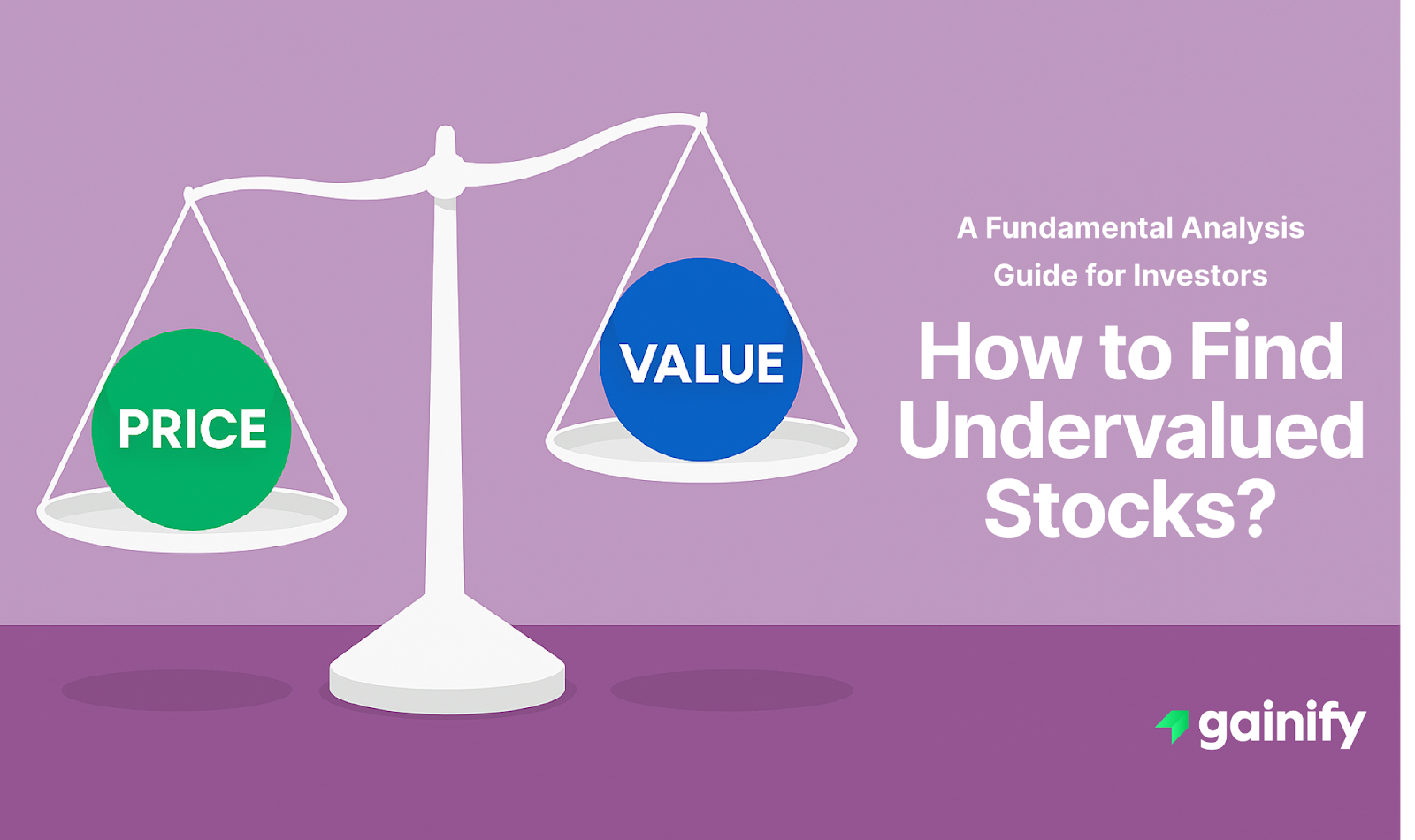When recession headlines start to dominate the news, many investors react too late. Volatility spikes, growth stocks fall, and portfolios take a hit before any adjustments are made. That is why the time to prepare is before the slowdown begins. The most effective investors act early, shifting toward companies with consistent demand, strong cash flow, and resilient business models.
These are known as recession resistant stocks. They tend to hold up when others struggle, offering stable returns and continuing to pay dividends even in tough conditions. You will not avoid every dip, but you can protect your portfolio by owning businesses that meet essential needs and maintain profitability across the economic cycle.
So what should you actually do? Focus on companies in healthcare, consumer staples, utilities, and essential services. Look for low debt, recurring revenue, pricing power, and a proven track record of stability. These traits help preserve capital and generate income when the broader market is under pressure.
In this guide, we will break down what makes a stock truly recession resistant, which sectors tend to outperform, how to avoid common traps, and which companies are positioned to hold up during the next economic slowdown. If your goal is to build an investment portfolio that works in any environment, this is where to begin.
What Are Recession Resistant Stocks?
Recession resistant stocks are companies with financial and operational strength that allows them to perform reliably even when the broader economy slows. These businesses stand out because of their stability across three key areas: earnings, balance sheet, and cash flow.
First, they have steady revenue and earnings during periods of reduced consumer or business spending. Their income statements show consistent demand for products or services that people continue to buy regardless of economic conditions. These are not discretionary items. They are necessities, which is why many recession resistant companies are found in sectors like healthcare, utilities, and consumer staples.
Second, they maintain strong balance sheets. That includes low levels of debt, sufficient liquidity, and the ability to meet short-term and long-term obligations. In a downturn, companies with weak financial positions often struggle to refinance debt or manage ongoing costs. Stronger businesses avoid this by keeping leverage under control.
Third, they generate reliable free cash flow. This is essential during recessions. Companies with consistent cash flow can continue to operate, pay dividends, invest selectively, and avoid relying on outside financing. This flexibility can help them gain market share while weaker competitors are cutting back.
Unlike cyclical stocks, which tend to rise and fall with the broader economy, recession resistant companies are driven by stable, recurring demand. They offer essential products or services that people continue to use in any economic environment. That reliability makes them a core component of a resilient, long-term investment portfolio.
Characteristics of Recession-Proof Stocks
Recession-proof stocks are not defined by what they sell, but by how their businesses behave when the economy contracts. If you are looking to identify truly resilient companies, you need to evaluate their performance through the full financial lens: starting with revenue durability, followed by balance sheet strength, and then cash flow flexibility. Below are five essential traits to look for.
1. Reliable Demand That Spans the Economic Cycle
The foundation of any recession resistant business is a product or service with non-discretionary, recurring demand. When households reduce spending, they still purchase everyday items like toothpaste, electricity, medication, and food staples. These are not optional. They are routine necessities that maintain their sales volume regardless of macroeconomic pressure.
Companies like Procter & Gamble, PepsiCo, and Johnson & Johnson are not just well-known brands. They operate in product categories where demand remains consistent. Whether consumers are confident or cautious, they continue buying these items with little disruption.
2. Cash Flow Strength and Conservative Capital Structure
Free cash flow is the most important indicator of whether a company can weather a downturn. Earnings can be managed and balance sheets can be dressed up, but cash flow reveals how much real money a business generates after covering its operating and capital needs. It is the ultimate financial buffer.
Recession resistant companies consistently produce positive free cash flow, even in low-growth environments. This allows them to self-fund operations, support dividend payments, and reinvest for the future without relying on outside capital.
A strong cash position also gives companies the flexibility to act when others cannot. They can maintain headcount, invest opportunistically, or acquire weaker competitors — all without tapping strained credit markets.
To be truly resilient, this cash flow must be supported by a conservative balance sheet. That means manageable debt levels, limited refinancing risk, and sufficient liquidity. Companies that rely on borrowing to meet basic obligations may appear strong in good times but are often the first to stumble in a downturn.
3. Essential Services with Predictable, Regulated Revenues
Some companies operate in industries where demand is structurally insulated from economic downturns. Utilities are the clearest example. Energy providers like NextEra Energy or WEC Energy serve essential needs such as electricity and gas, often under government-regulated pricing models.
These firms benefit from revenue stability, and in many cases, annual rate adjustments that are contractually built into their operating model. This makes their top-line performance relatively immune to short-term economic fluctuations and provides investors with a dependable income stream.
4. Pricing Power Through Brand Equity
Recession resistance is not just about volume. It is also about margin protection. Companies with strong brands and pricing power can maintain profitability even if input costs rise or unit volumes fall.
Think of companies like Coca-Cola, McDonald’s, or Nestlé. These are global brands with deep consumer loyalty. They can introduce value-tier products for budget-conscious buyers while still charging a premium for convenience or brand trust. This mix helps them protect earnings when other firms are discounting aggressively just to drive sales.
5. Operational Efficiency and Cost Flexibility
Finally, a true recession resistant company must be able to adjust its cost base without damaging the long-term business. Operational leverage is useful in good times, but companies that can also contract expenses during downturns without hurting core capabilities are far better positioned.
This often comes from well-established supply chains, asset-light business models, or strong vendor relationships. It is especially common in firms that operate across essential services or provide recurring infrastructure, such as large-scale logistics, payment networks, or data services.
Top Sectors That Outperform During Recessions
When the broader stock market struggles, not all sectors respond the same way. Some are tightly linked to the economic cycle, while others show surprising resilience. Investors looking to strengthen their portfolios during recessionary periods should focus on industries where demand remains consistent, cash flow is predictable, and margins can be protected.
Below are four sectors that historically perform well when the economy contracts.
A. Consumer Staples
The consumer staples sector offers the most reliable example of recession resilience. This includes products like paper goods, household cleaners, beverages, and packaged foods. These are items people buy out of necessity, not desire. Even in periods of reduced consumer spending, families continue to stock up on soap, soda, toothpaste, and pantry staples.
Companies like PepsiCo, Colgate-Palmolive, and General Mills benefit from this baseline demand. These businesses also tend to produce steady operating cash flow, which supports their ability to pay and grow annual dividends through multiple economic cycles. Their brands are widely recognized, and their products are used every day, which helps limit volatility in both sales and earnings.
B. Healthcare and Biopharma
Healthcare is one of the few sectors where demand is structurally insulated from economic conditions. People do not delay treatment for diabetes or cancer based on market sentiment. This provides biopharmaceutical companies with a powerful combination of recurring revenue and long-term pricing strength.
Companies like Eli Lilly and Novo Nordisk are especially well-positioned because they serve growing patient populations with chronic conditions. Their products are reimbursed through insurance or public healthcare systems, further stabilizing cash flows. In addition to pharmaceuticals, sectors such as diagnostics, medical devices, and managed care also demonstrate strong recession resilience due to essential service delivery and durable funding models.
C. Utilities and Infrastructure
The utilities sector performs well during recessions because the underlying services, electricity, water, heating are non-negotiable. Customers do not cancel power to save money. This makes revenue both consistent and regulated in many regions, with pricing frameworks that allow for gradual increases over time.
Firms like NextEra Energy and WEC Energy operate under long-term contracts or rate agreements, providing visibility into future earnings and cash generation. Infrastructure-focused entities such as Brookfield Infrastructure Partners or Realty Income also belong in this group. These companies generate revenue from critical assets like data centers, energy pipelines, or leased retail space, which are often tied to multi-year agreements and escalating cash flows.
What About Real Estate?
Real estate can offer stability during recessions, but not all properties are equal. When investing through real estate investment trusts (REITs), it is critical to understand what types of assets they hold and how those assets generate income.
Office and hotel REITs tend to struggle during downturns. Businesses cut back on office space, and travel declines, which hurts both occupancy and rental income.
On the other hand, retail REITs focused on essential businesses like grocery stores, pharmacies, and discount chains often remain steady. These tenants serve daily needs and usually stay open regardless of the economy.
Realty Income is a prime example. It leases properties to large, stable retailers under long-term contracts, often with built-in rent increases. This creates predictable income that can support consistent dividends.
Data center and infrastructure REITs offer services that businesses cannot do without, such as cloud storage and network access. These properties often have long leases and high renewal rates.
In short, real estate can be recession resistant, but only if the assets are essential and the tenants are reliable. Always look at the type of property, the lease terms, and the financial health of the tenants before calling a REIT defensive.
What Most People Miss
Many investors assume certain sectors are always safe, but that can be a costly mistake. A stock’s popularity does not guarantee resilience.
Utilities and consumer staples are often labeled defensive, but too few investors check what’s under the surface. Some utilities carry high debt and are investing heavily in large-scale energy transitions. If they lack strong cash reserves or free cash flow, they can face pressure when rates rise or financing tightens.
The same applies to communication services, especially streaming companies. These businesses may feel essential because they are widely used, but many rely heavily on advertising revenue. In a downturn, ad budgets are among the first to be cut, which can hit earnings hard.
The lesson is simple. Do not rely on labels or headlines. Always review debt levels, profit margins, capital spending, and cash flow stability. True resilience is built on fundamentals, not perception.
Why Exposure Matters Before the Crash
The time to think about recession resistant stocks is before markets turn. Once the slowdown is visible in earnings or employment data, much of the opportunity has already passed. By then, defensive stocks often trade at a premium, and reallocating becomes harder without locking in losses elsewhere.
Investors who build exposure early benefit from two key advantages. First, they reduce downside risk by owning companies with stable demand, strong cash flow, and durable dividends. Second, they gain time to let these positions compound, regardless of short-term volatility.
You do not need to convert your entire portfolio. Even a targeted shift in sector allocation can improve overall resilience. Increasing exposure to healthcare, consumer staples, utilities, and mission-critical infrastructure provides ballast when cyclical sectors decline.
The goal is not to time recessions perfectly. It is to enter downturns already holding businesses that are built to endure them. A resilient core makes it easier to stay invested, take advantage of dislocations, and recover faster once conditions stabilize.
Tools to Help You Track Recession-Proof Stocks
Spotting truly resilient stocks takes more than reading headlines. You need tools that surface what actually matters – stable cash flow, low debt, and consistent demand.
Platforms like Fiscal.ai and Gainify let you screen for these traits quickly. They highlight companies with strong fundamentals, compare valuation across sectors, and help you align stock selection with your risk profile.
Prioritize platforms that rely on original research, primary data, and trusted sources. Avoid tools that recycle surface-level metrics. Real insight requires depth.
Final Thought: Play Offense with Defense
Investing during recessionary periods is not all about hiding in cash. In fact, excessive allocation into cash can hurt your average return by locking in cost of forgone returns.
The key is to lean into recession-proof stocks that have proven resilient. Add cash-equivalent investments to reduce risk, sure. But also focus on asset allocation and sector rotation into names with strong fundamentals.
Smart long-term investors know that challenging times create opportunities. That is when the best-performing consumer staples stocks and best-performing healthcare stocks start compounding quietly.
You don’t need to predict the next stock market crash. You just need to own businesses built to weather it.




